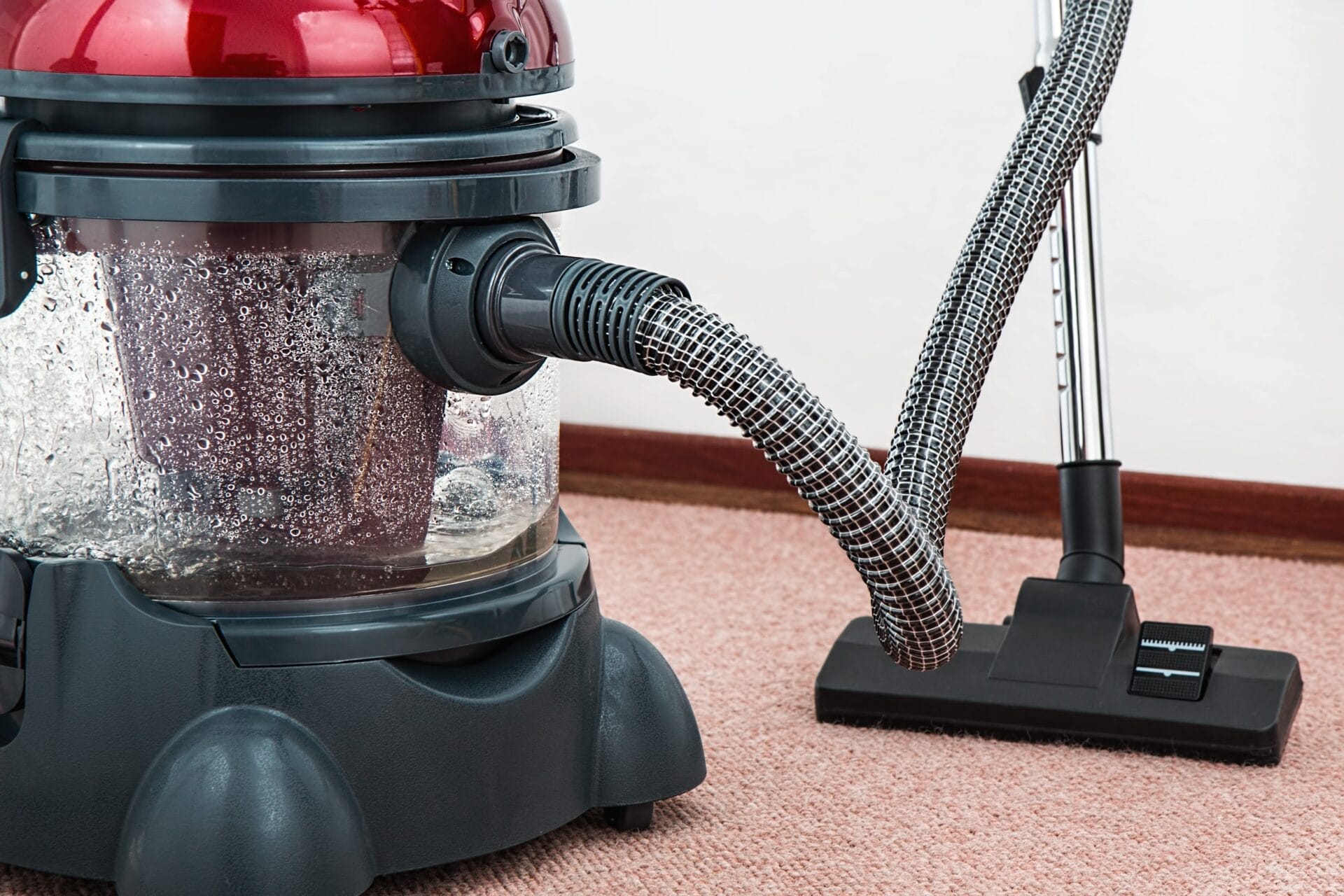Vacuum distillation is a method of distillation used to separate liquids that have different boiling points. This method is commonly used to distill liquids that would normally decompose at their normal boiling point, or which have a very high boiling point. It can also be used with mixtures of liquids that have different boiling points and which form an azeotropic mixture, where the mixture has a constant boiling point and cannot be separated by normal distillation methods. Vacuum distillation allows for the separation of these components by reducing the pressure so that the components boil at lower temperatures, thus allowing them to be more easily separated.Vacuum distillation is a method of distillation that involves the use of reduced pressure to lower the boiling point of a liquid so that it can be distilled at a temperature lower than its normal boiling point. This technique is often used to purify liquids that have a high boiling point or to separate liquids that have very similar boiling points.
Advantages of Vacuum Distillation
Vacuum distillation is a process that uses a vacuum to reduce the boiling point of a liquid, allowing it to be distilled at lower temperatures. This process has many advantages over traditional distillation methods, including increased safety, improved product purity, and energy savings. In addition, vacuum distillation can be used to purify liquids which cannot be distilled using traditional methods due to their high boiling points.
One of the main advantages of vacuum distillation is increased safety. By reducing the boiling point of the liquid being distilled, there is less chance of accidents occurring due to high temperatures or pressure build-up in the system. This makes vacuum distillation preferable for many industrial operations where safety is a priority.
Another benefit of vacuum distillation is improved product purity. At lower temperatures and pressures, fewer thermal decomposition reactions occur which can lead to impurities in the final product. This results in a higher quality end product with fewer contaminants and better overall consistency.
Finally, vacuum distillation can provide energy savings compared to traditional methods. Since less heat is required to reach the desired temperature, less energy is consumed during the process resulting in significant cost savings for facilities utilizing this technology.
Advantages of Vacuum Distillation
Vacuum distillation is a process used to separate components of a liquid mixture by evaporation and condensation. This method is advantageous when working with heat sensitive materials, as it can be done at much lower temperatures than normal distillation. It also reduces the pressure on the system, allowing more volatile components to evaporate quickly and easily. Another advantage to vacuum distillation is that it minimizes the formation of secondary compounds due to lower temperatures, allowing for a purer product. Additionally, it is often more efficient than traditional distillation because it requires less energy and time to complete.
Disadvantages of Vacuum Distillation
Vacuum distillation also has some disadvantages. Due to its low-temperature nature, the process can be labor intensive and may require special equipment. In addition, this method is limited in its ability to separate components with similar boiling points or volatilities. Furthermore, the process can be expensive and may require additional steps such as rectification or fractional crystallization in order to obtain a pure product. Lastly, vacuum distillation can take longer than other methods such as steam distillation as it requires more time for each component to completely evaporate.
Vacuum Distillation
Vacuum distillation is a process of distilling a liquid at a pressure below atmospheric pressure. This process lowers the boiling point of the liquid and helps in separating the components with different boiling points. Vacuum distillation is used to separate chemical compounds which have similar boiling points, but are insoluble in each other. It is also used to recover solvents which are difficult to boil, such as ether and acetone.
Advantages
Vacuum distillation has several advantages over traditional distillation methods. First, it can be done at lower temperatures which reduces the risk of thermal degradation or decomposition of the compound being distilled. Second, vacuum distillation requires less energy than other conventional methods, making it more energy efficient. Lastly, vacuum distillation requires less time than other traditional methods and the process can be automated.
Applications
Vacuum distillation is used in various industries such as pharmaceuticals, petrochemicals, food processing and cosmetics. In pharmaceuticals, vacuum distillation is used to purify active pharmaceutical ingredients (API) and separate them from impurities. In petrochemicals industry, it is used to separate crude oil into various fractions including naphtha, kerosene and gas oil. In food and beverage industry, vacuum distillation is used to concentrate fruit juices without losing their flavor. In cosmetics industry it is used for extracting essential oils from plants.
Uses
Vacuum distillation is also used for recovering expensive solvents from industrial waste streams and for recycling solvents that are difficult to evaporate. It can also be used for desalination of water by evaporating salt water in a vacuum chamber and condensing the vapor back into liquid form. Vacuum distillation has many advantages over conventional methods such as higher efficiency, low energy consumption and reduced risk of contamination or decomposition of products during processing.
Vacuum Distillation Temperature Levels
Vacuum distillation is a process used to separate liquids from solids, or to separate two liquids with different boiling points. Vacuum distillation is performed by creating a pressure differential between the liquid mixture and the outside environment. This allows the mixture to be heated at lower temperatures, preventing thermally labile compounds from being destroyed. The temperature levels used in vacuum distillation must be carefully monitored and adjusted depending on the specific needs of the application.
For most applications, a range of temperatures are used for vacuum distillation. Low temperatures are typically used for separating two liquids with very close boiling points, while higher temperatures are necessary when more volatile components need to be separated. The temperature range usually starts at around room temperature and can reach up to 400°C or higher, depending on the nature of the mixture and its components.
When dealing with particularly thermally labile compounds, lower temperatures may need to be used in order to prevent them from being destroyed by thermal degradation. In these cases, an even wider range of temperatures can be employed, ranging anywhere from -50°C up to 300°C or higher. This allows for more precise control over the separation process and helps ensure that all components of the mixture are safely extracted without damage.
In general, vacuum distillation requires careful monitoring and adjustment of the temperature levels in order to ensure that all components are efficiently separated without damage or loss of valuable compounds. By using a wide range of temperatures tailored to each specific application, vacuum distillation can produce high-quality results while avoiding destruction of thermally labile compounds.

Vacuum Distillation
Vacuum distillation is a process of distilling liquids in a reduced pressure environment, allowing them to boil at lower temperatures. This process can be used to separate liquids with different boiling points, as well as to purify existing liquids by removing impurities and other dissolved solids. Vacuum distillation can be used with a variety of different types of equipment, depending on the specific application.
Simple Vacuum Distillation
Simple vacuum distillation involves the use of a single-stage apparatus where the liquid is heated and evaporated in an environment where the external pressure is lower than atmospheric pressure. This allows for the vaporization of the liquid at a lower temperature than would otherwise be possible. The vapor is then cooled and condensed back into its liquid form. This type of vacuum distillation is often used for separating water from organic solvents or other low-boiling liquids from higher boiling ones.
Fractional Vacuum Distillation
Fractional vacuum distillation involves the use of multiple stages to separate two or more components with similar boiling points. A fractionating column is usually installed between each stage, which helps to further separate each component based on its individual boiling point. This type of vacuum distillation is often used in petrochemical refining and pharmaceutical production processes.
Vacuum Steam Distillation
Vacuum steam distillation involves using steam as a heating medium in order to evaporate certain volatile compounds such as essential oils or aromatics from plant materials. The reduced pressure within the system allows for much lower temperatures than would otherwise be possible, which helps to preserve the delicate aromatics that are being extracted from the plant material. This type of vacuum distillation is often used in perfumery and flavor industries.
Pressure Swing Vacuum Distillation
Pressure swing vacuum distillation utilizes multiple stages and varying levels of external pressures within each stage in order to more effectively separate different components from each other based on their individual boiling points. This type of vacuum distillation system can also be used to remove impurities from existing liquids by utilizing higher pressures during certain stages of operation. Pressure swing vacuum distillations are commonly employed in industrial processes such as petrochemical refining and desalination processes.
Vacuum Distillation
Vacuum distillation is a method used to separate liquid mixtures that have different boiling points. This process involves the use of a vacuum pump to reduce the pressure in the distillation flask, allowing the liquid mixture to boil at a much lower temperature than it normally would. The lower boiling point allows for more efficient separation of the components of the mixture. Vacuum distillation is commonly used in industries such as petrochemical, pharmaceutical and food production.
The process of vacuum distillation begins with the mixture being placed into a distillation flask. A vacuum pump is then used to reduce the pressure within the flask, lowering the boiling point of the liquid mixture. Heat is then applied to the flask, causing evaporation and separation of components with different boiling points. The vapor condenses in a condenser and collects in a collection flask, while any non-volatile substances remain in the distillation flask.
The process can be repeated multiple times if necessary, allowing for more efficient separation of low-boiling components from one another. Vacuum distillation is often used when traditional methods cannot be employed due to safety concerns or space restrictions. It is also useful for separating substances with very high boiling points or those which decompose at higher temperatures.
Vacuum Distillation
Vacuum distillation is a method of distillation used to separate components of a liquid mixture at lower temperatures than normal atmospheric pressure. It is often used to purify liquids that have high boiling points, such as crude oil fractions and other industrial chemicals. Vacuum distillation is a useful technique because it can be used to achieve separation without the need for a large temperature gradient or frequent monitoring of temperatures. In addition, it can be used in applications where contamination of the product must be avoided.
Benefits of Using Vacuum Distillation
The primary benefit of using vacuum distillation is that it allows for efficient separation at relatively low temperatures. This reduces the amount of energy required to separate components, making it more cost-effective than traditional distillation techniques. Additionally, because vacuum distillation takes place under a reduced pressure, fewer volatile compounds escape into the atmosphere. This makes vacuum distillation an environmentally friendly option for some applications.
Another advantage of vacuum distillation is that it allows for better control over the rate at which components are separated from one another. This can help reduce impurities in the final product and improve product quality. Furthermore, since the process occurs in a closed system, there is less risk of contamination from external sources such as dust or other airborne particles.
Finally, vacuum distillation can be used on a wide range of liquids and solids with different boiling points and densities, making it extremely versatile and suitable for many industrial processes. By using this technique, manufacturers can reduce production costs while still producing high-quality products with minimal environmental impact.

Conclusion
Vacuum distillation is a process used to separate liquids from solids, or to separate mixtures of liquids with different boiling points. It is an important technique in the chemical and petroleum industries, as it can be used to purify and refine many materials. Vacuum distillation is advantageous over other forms of distillation because it can be used at lower temperatures and pressures, making it much more energy efficient. Additionally, vacuum distillation can be used to separate materials that are too volatile for regular distillation. While vacuum distillation requires special equipment and expertise to operate correctly, it remains a key tool in the chemical and petroleum industries, as it allows for efficient separation of many different materials.
Overall, vacuum distillation is an important technique in the chemical and petroleum industries that can be used to purify and refine many materials. It is energy efficient, allowing for the separation of materials at lower temperatures than what would be required for regular distillation. While specialized equipment is needed for vacuum distillation, the process can be safely conducted when operated by experienced personnel.

